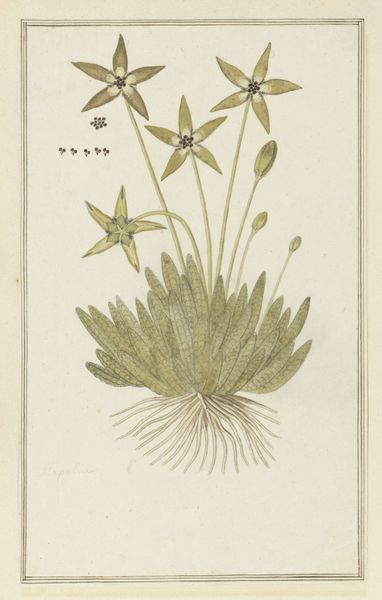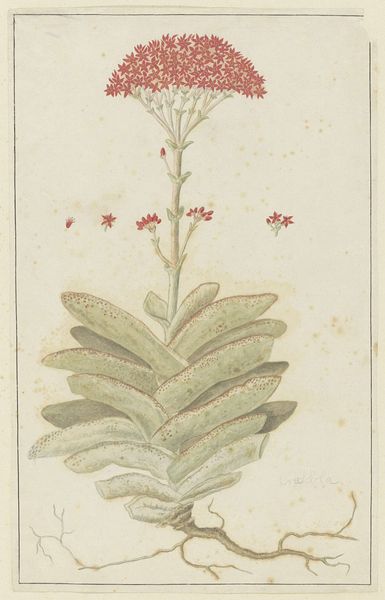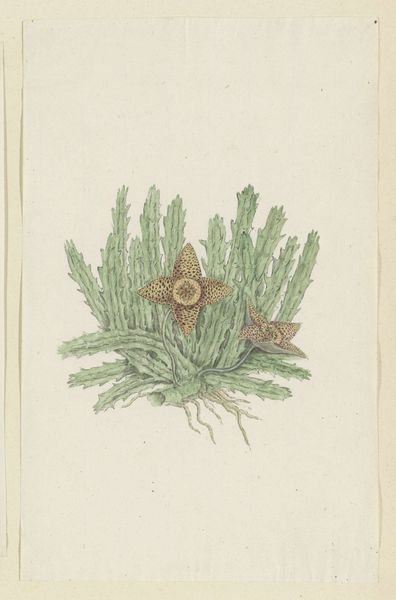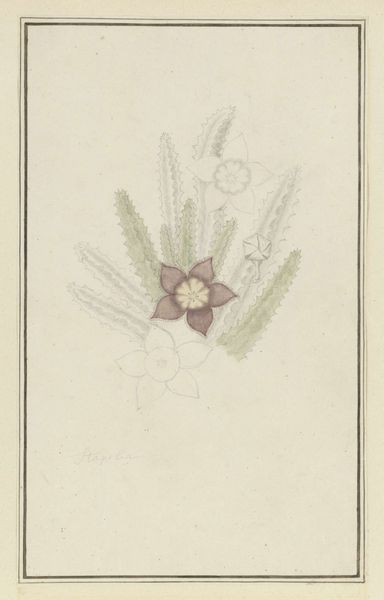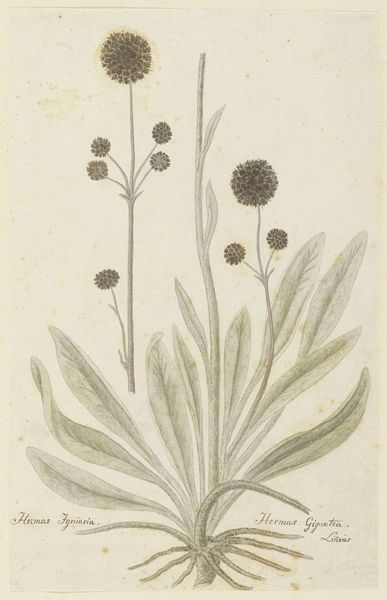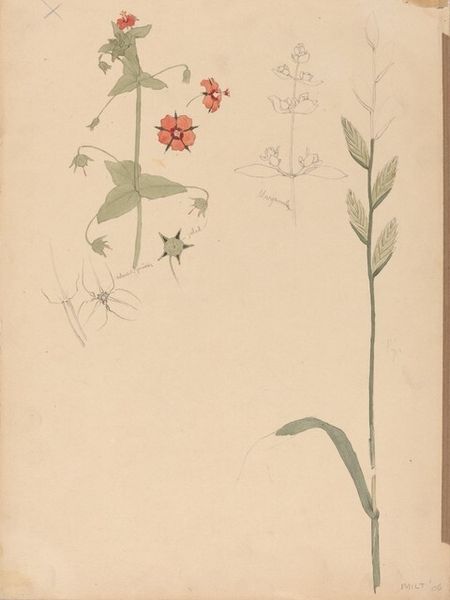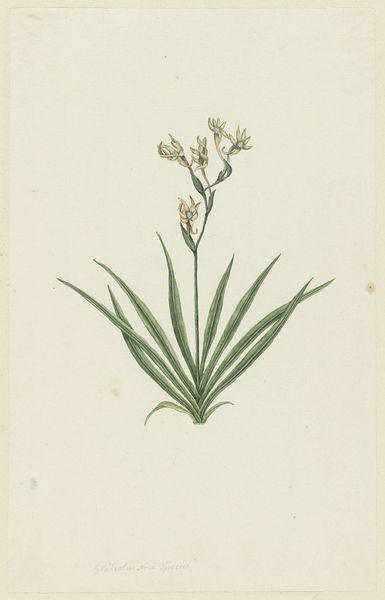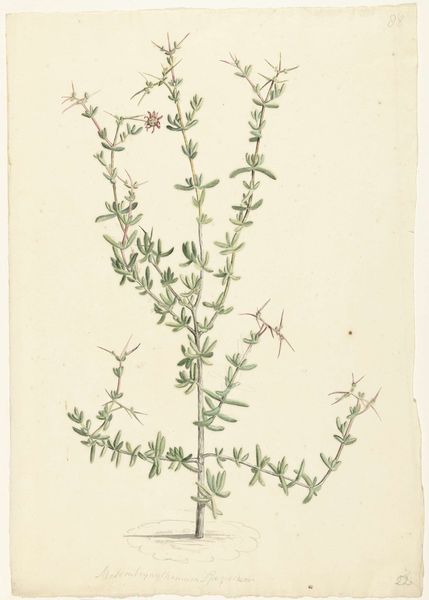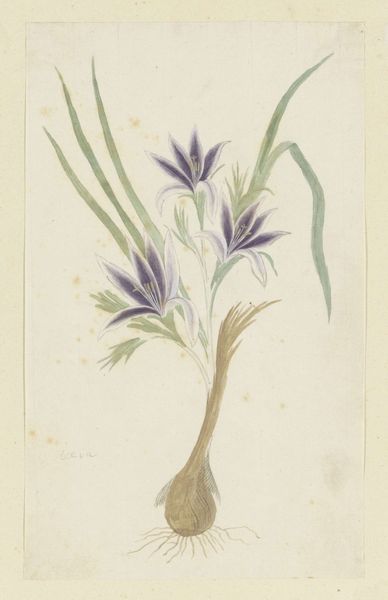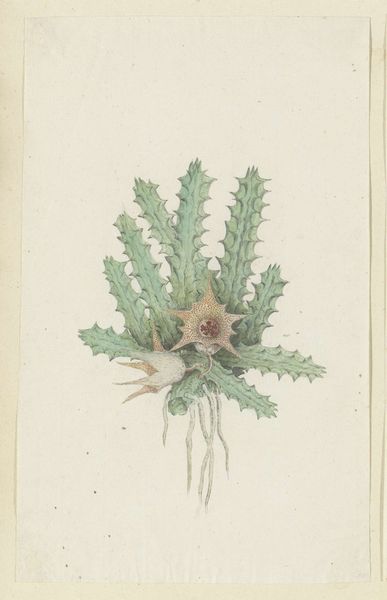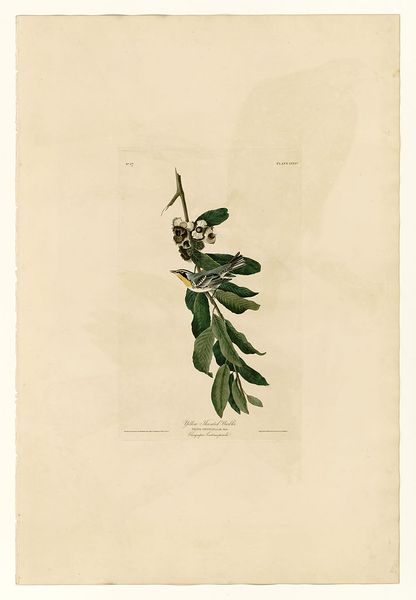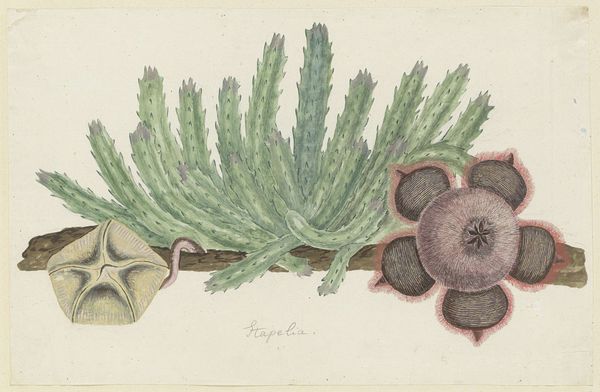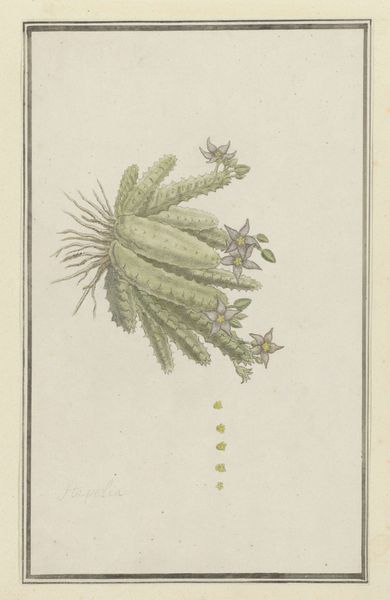
Tridentea gemmiflora (Masson) Haw.(Stapelia gemmiflora) Possibly 1777 - 1786
0:00
0:00
Dimensions: height 660 mm, width 480 mm, height 387 mm, width 258 mm, height mm, width mm
Copyright: Rijks Museum: Open Domain
Curator: This lovely watercolor illustration is "Tridentea gemmiflora," also known as Stapelia gemmiflora. It's attributed to Robert Jacob Gordon and thought to date from 1777 to 1786. What are your initial impressions? Editor: Striking. The stark black flower, presented in exacting detail, immediately arrests the eye against the muted green of the stems and buds. Its dark beauty gives it a somewhat gothic allure. Curator: That aesthetic sensibility perhaps reflects its time, the Romantic era's fascination with the sublime. The illustration itself is rooted in botanical exploration, linked to the Dutch East India Company's activities in Southern Africa, a venture that shaped Gordon’s travels and work. Editor: Absolutely, and structurally, consider the precise linework, the controlled washes of color which denote depth, texture, and volume. Notice how the artist employs light and shadow, albeit subtly, to enhance the three-dimensionality of each element—from the fuzziness of the flower's petals to the delicate prickles of the stem. Curator: Gordon, as a military officer and naturalist, was commissioned to document the landscape and its resources, but it also played a crucial role in expanding colonial knowledge of the region’s biodiversity. The choice of watercolor makes it highly reproducible. Editor: True, although I detect a certain artistic license as well. Note the unusual, almost unnatural black pigmentation of the flower. It accentuates form and contrasts sharply with other watercolor botanical works with more documentary focus. Curator: It does reflect that balance of science and Romantic aesthetics; the demand for faithful representation and the desire to highlight the inherent drama of the natural world. The flower had cultural implications, as such artistic pursuits underscored the power and scope of imperial ambitions, using art as a tool for knowledge consolidation and visual domination. Editor: Fascinating. On the whole, the controlled strokes, color composition, and formal detail reflect the plant as the artist renders its striking beauty for intellectual analysis. The artist draws you into an experience of scientific observation of line and tone. Curator: Indeed. It’s an artwork rich in layers, simultaneously reflecting scientific curiosity, colonial ambition, and an emergent artistic style that captured the spirit of the age. Editor: Quite. Thank you for unraveling the botanical artwork's cultural framework. I've gained a greater awareness and insight into a particular view of this exotic flower.
Comments
No comments
Be the first to comment and join the conversation on the ultimate creative platform.
